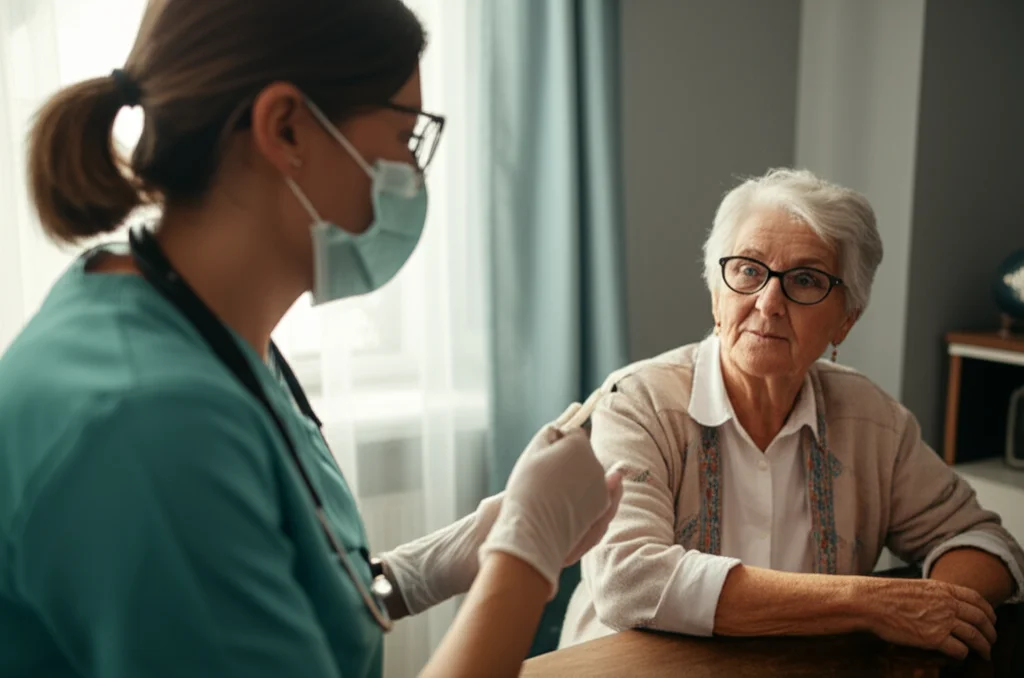Your Frailty Journey Matters: A Surprising Link to Cancer Risk
Hey there! Let’s chat about something that affects many of us as we get older, or even as we hit middle age: frailty. Now, when you hear “frail,” you might picture someone very elderly and delicate, right? But frailty is actually a clinical syndrome, a bit like your body’s overall resilience score. It’s about having reduced physiological reserves, making you more susceptible to stress and illness. Think of it as your biological age, which doesn’t always match your calendar age!
For a long time, we’ve known that frailty can make things tougher if you *already* have a serious illness, like cancer. It can affect how well treatments work or increase complications. But what about the other way around? Could being frail actually *increase* your risk of *getting* cancer in the first place? That’s a question that hasn’t had a super clear answer, especially when you look at how frailty changes over time.
That’s where a really interesting study comes in, using data from the China Health and Retirement Longitudinal Study (CHARLS). These folks followed a large group of middle-aged and older adults in China for years – from 2011 to 2020, to be exact. Their goal was to see if someone’s frailty level at the start, and how that frailty changed over time, was linked to their risk of being diagnosed with cancer later on.
Looking at the Starting Line: Baseline Frailty
First, they looked at participants’ frailty status right at the beginning of the study. They used something called a “frailty index,” which is basically a score based on how many health deficits someone has (things like difficulties with daily tasks, physical limitations, chronic diseases, mental health indicators, etc.). A higher score means more frail.
They found that, compared to people who weren’t frail at the start, those who were “pre-frail” (a moderate score) had about a 34% higher risk of developing cancer during the follow-up period. And for those who were already “frail” (a higher score) at the beginning? Their risk was even higher – about 66% greater!
So, even just being a bit frail or clearly frail at one point in time seems to nudge your cancer risk upwards. The study even calculated that for every 0.1 increase in the frailty index score, the overall risk of cancer went up by 22%. That’s a pretty significant association, wouldn’t you say?

The Journey of Frailty: It’s About the Path
But here’s where the study gets even more insightful. Frailty isn’t always static; it can change. People can become more frail, or sometimes, with the right support, they can even become less frail. The researchers tracked how participants’ frailty levels changed over several years.
They identified three main “trajectories” or paths that people’s frailty seemed to follow:
- Low-level stable: These folks started with low frailty and stayed pretty stable over time.
- Medium-level increase: This group started with a moderate frailty level that slowly but steadily increased.
- High-level increase: These participants began with a higher frailty level, and it continued to climb significantly over the years.
Now, the big question: did the *path* of frailty matter for cancer risk? Absolutely! Compared to the group whose frailty stayed low and stable, both groups with increasing frailty trajectories had a much higher risk of cancer. The medium-level increase group had about a 2.86 times higher risk, and the high-level increase group had a whopping 5.43 times higher risk! This tells us that not only does your current frailty level matter, but how it’s changing is a really strong predictor of future cancer risk. It’s like your body is sending signals about its overall health trajectory.
Who’s Most at Risk?
The study also dug a bit deeper to see if this link between frailty and cancer risk was the same for everyone. Interestingly, when they looked at different age groups and sexes, they found some nuances.
While baseline frailty showed a significant link for those under 60 and for women, the most striking finding came from the frailty trajectories. The *highest* risk associated with an increasing frailty path was seen particularly in:
- Participants aged ≥ 60 years
- Female participants
For women in the high-level increase group, the risk was particularly high (about 11.87 times greater than stable low frailty). This suggests that while frailty is a concern for everyone, paying extra attention to frailty and its progression might be especially crucial for older adults and women.

Why Might This Be Happening?
Okay, so there’s a link. But *why*? The researchers touched on some potential biological reasons. Both aging and frailty are linked to things like:
- Chronic low-grade inflammation: This is like a simmering fire in your body that can promote cell growth and help tumors spread.
- Muscle wasting (sarcopenia): Loss of muscle mass is common in frailty and can mess with your metabolism and immune system.
- Metabolic disorders: Problems with how your body uses energy can create an environment where cancer might thrive.
- Oxidative stress: This is damage at the cellular level that can affect DNA and promote cancer cell growth.
These underlying issues, common in frail individuals, could create a more favorable environment for cancer to develop and progress.
What Does This Mean for Us?
This study really hammers home a crucial point: frailty isn’t just something that happens *after* you get sick. It’s a state that can exist beforehand and act as a predictor of future health problems, including cancer.
The good news? Frailty, especially in its earlier stages (pre-frailty), is often reversible or manageable. This study’s findings strongly suggest that if we can identify frailty early and take steps to address it – through things like exercise, nutrition, and managing chronic conditions – we might not only improve quality of life but potentially reduce the risk of developing cancer down the line.
Think of it as investing in your body’s resilience. By working to prevent or reverse frailty, we’re building up those reserves, making our bodies less susceptible to diseases like cancer. This is particularly important for older adults and women, who the study showed might be at higher risk when frailty increases.

The Nitty-Gritty: Study Details and Caveats
Just a quick note on the study itself. It’s a big one, using a large, representative sample from China, which is great because a lot of previous research was in different populations. Looking at the frailty *trajectory* over time is also a major strength – it gives us a much richer picture than just a single snapshot.
Of course, like any study, it has limitations. Frailty and cancer diagnoses were based on self-reports from participants, which isn’t quite as precise as clinical records. They also couldn’t account for *every* single factor that influences cancer risk, like detailed diet or physical activity habits. And the COVID-19 pandemic might have introduced some complexities towards the end of the study period.
But even with those points, the core message is clear and powerful: frailty and, critically, the *increase* in frailty over time, are linked to a higher risk of cancer incidence, especially in older adults and women.
This research adds significant weight to the idea that addressing frailty isn’t just about improving life quality in later years; it could be a vital strategy in the fight against cancer too. It’s a call to action for healthcare systems and individuals alike to pay attention to this often-overlooked aspect of health. Let’s build resilience!
Source: Springer







